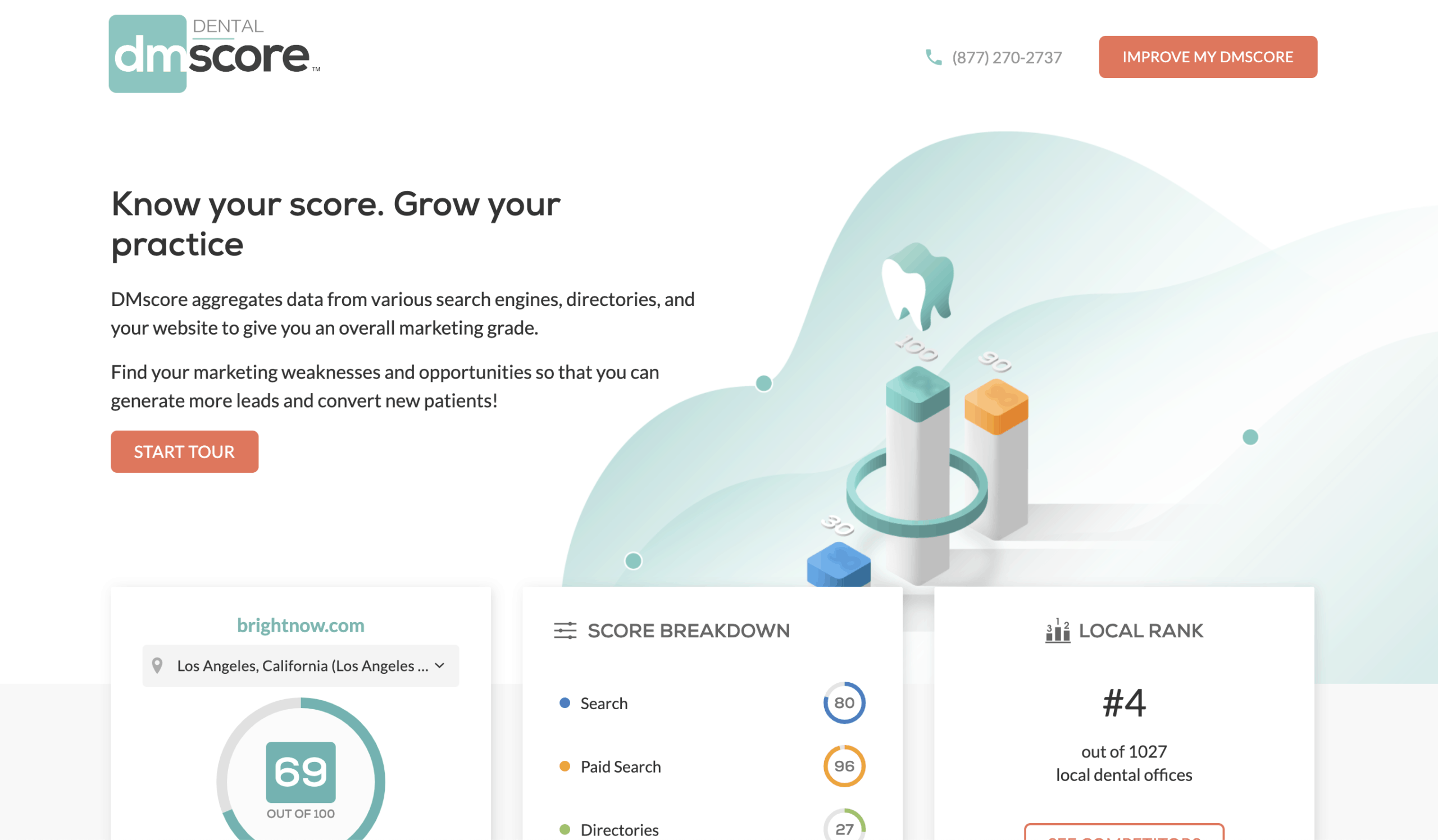According to an IBISWorld report, there are over twenty-thousand digital advertising agencies in the US. The vast majority of these are small and mid-sized shops not affiliated with a global parent company. In a crowded field it seems as hard as ever to grab a moment of your prospect’s attention, and harder still to “differentiate”–to convince your prospect that your agency is not like all the rest. Despite the difficulty, at least one DMscore partner agency found a way to differentiate using DMscore branding and marketing tools.
Certainly one of the major challenges faced by agencies of every size is differentiation. But even after you’ve won the client’s business, a significant challenge remains. How do you prove your work has made a difference? Digital analytics can help tell your client when the bounce rate has gone down. But what about overall effectiveness? What about the quality of overall digital footprint? Perhaps more importantly: how do you determine a common criteria that can compare to your client’s competitor?
DMscore can make a critical difference against all these challenges.
DMscore is FICO for digital marketing. Somewhat like a credit score that takes into account a number of factors, a “DMscore” rates a company’s web presence, SEO capability, ad spend and directory presence (among other factors)–and tracks them over time. It’s a common trend line that lets a business see how they’re doing against their competitors. It’s a way for an agency to demonstrate effectiveness; a way for an agency to retain a client, having demonstrably improved the client’s overall digital marketing effort.
But DMscore also is a great way for agencies to attract inbound prospects, and an excellent way to improve engagement when prospects come to your agency site.
Recently DMscore agency partner Dental Arcade deployed DMscore’s toolkit for an email campaign targeted at dental practices nationwide. One of the key components of DMscore’s toolkit is a “widget” that Dental Arcade deployed on a landing page. The DMscore “widget” is really a field where a prospect can put in their company’s url, hit submit, and get their DMscore immediately. This is because DMscore has scored over 70,000 dentists nationwide.
According to Dental Arcade’s Garrett Vatcher, DMscore content drove visitors to nearly double their time-on-site engagement. Garrett says:
We saw an increase of visitor engagement from two minutes, forty seconds on the home page to four minutes, forty-eight seconds.
Any marketer would be happy to hear that prospects were now spending twice as long on a landing page than before.
But that’s not all.
The DMscore widget–embedded on Dental Arcade’s campaign landing page–increased visitor engagement by almost three minutes. Dental Arcade also reported that visitors exposed to DMscore branding and messaging stayed on the site 180% longer than visitors not exposed to DMscore.

Results may vary of course, but any time you can nearly double engagement, you’re in a great place. And for Dental Arcade at least, DMscore was critical to the success of the email campaign. The mechanics were relatively simple: Dental Arcade obtained the right to use DMscore’s widget on their landing page; they ran an email campaign inviting prospects to “find out their DMscore”; and many prospects did exactly that.
Dental Arcade can now go back to these prospects and say “I can improve your DMscore.”
As DMscore rolls out and becomes the common language of digital marketing effectiveness, this becomes a powerful assurance. In the not too distant future, we expect many more conversations to start with the question: “What’s your DMscore?”

